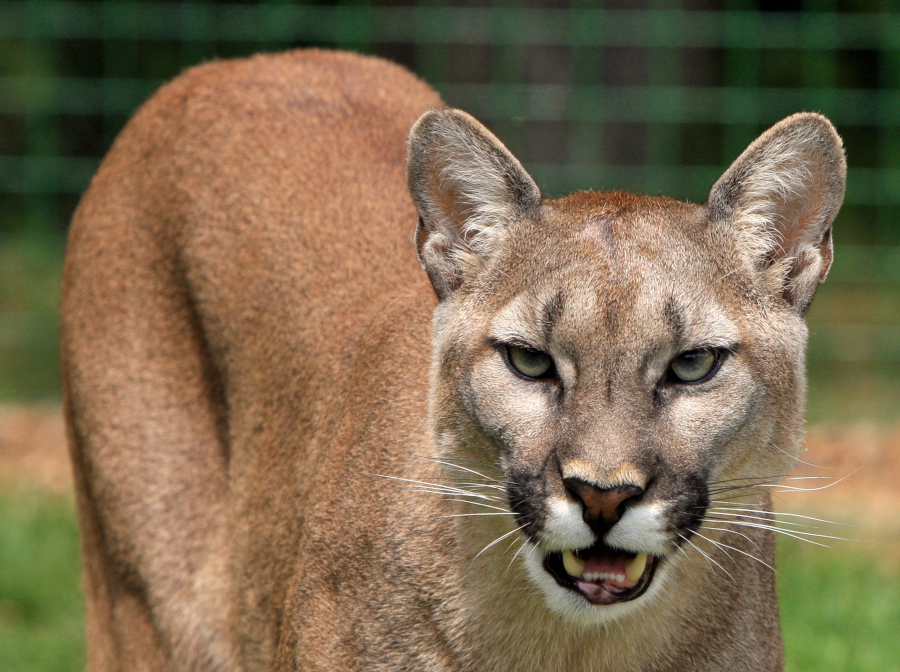
the Eastern Cougar is Puma concolor, reflecting the solid color without stripes or spots
Source: Public Domain Pictures

the Eastern Cougar is Puma concolor, reflecting the solid color without stripes or spots
Source: Public Domain Pictures
Ancestors of the cougar (also known as catamount, mountain lion, bobcat, puma, panther, painter, wildcat, and ghost cat) crossed into North America roughly 8 million years ago, and the species Puma concolor evolved around 400,000 years ago.1
The cougar has the largest geographic range of any native terrestrial mammal in the Western Hemisphere. A French naturalist created the name "cougar" by combining "puma" with "jaguar." The species epithet "concolor" is Latin for "of one color," because adults are a solid version of some sort of tan. Only the cubs have spots and stripes, though adults can have bold black accents on the face/ears.
Scientists once classified over 30 subspecies of cougars based on morphological differences. Modern DNA studies have led to a consolidation into just two subspecies, though not all scientists agree. According to the Cat Specialist Group, Puma concolor cougar is in North and Central America and Puma concolor concolor ranges throughout South America.2
The last cougar in Virginia was killed in Washington County in 1882. Except for a remnant population of Florida Panthers in southern Florida, there have been no wild cougars on the eastern side of North America since the last one was trapped in Maine in 1938.
Every year, state agencies investigate many reported sightings of cougars. Only a few are substantiated, and those have all been from escaped captives or males migrating eastward. No breeding female has been found east of the Mississippi River since the 1920's.3
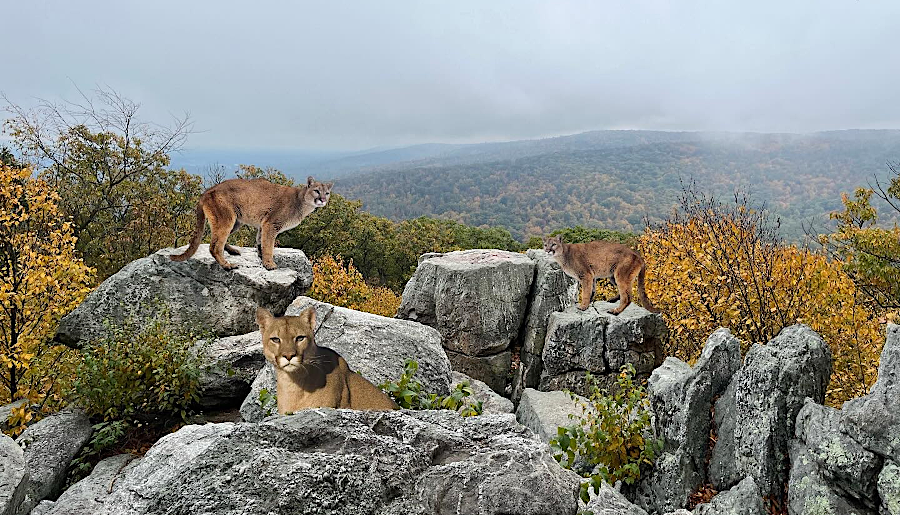
only on April Fools Day does the National Park Service think cougars have returned to the Blue Ridge
Source: National Park Service, Breaking News: Eastern Cougars are BACK at Catoctin Mountain Park! (April 1, 2025)
The US Fish and Wildlife Service listed the Eastern Cougar as Endangered in 1973, since it was considered to be a distinct breeding population separate from the western population. The population of cougars west of the Mississippi River was large enough that it was not listed. The Florida Panther was also listed as a separate subspecies, Puma concolor coryi. Even if the Eastern Cougar and Florida Panther were considered members of the same subspecies, they would have still qualified for separate listings as distinct breeding populations.
The 1982 Eastern Cougar Recovery Plan defined the establishment of one population containing at least 50 breeding adults as the threshold for moving the Eastern Cougar from "endangered" to just "threatened." The subspecies would no longer be considered "threatened" once three populations were found or established, with each containing more than 50 breeding adults.
In 2018, the Federal agency removed the Eastern Cougar from that list, though the Florida panther remained on it. The agency noted that the initial listing was an error, and the species had been extinct long before the 1973 listing:4
Suitable habitat is available now, but for decades it was not. Cougars depended heavily upon the white-tailed deer for food. The near-extirpation of deer would have forced any remaining cougar population during the 1930's-1970's to hunt in areas where the cats were likely to have been seen. The US Fish and Wildlife Service considered the lack of sightings during that period to be key evidence that no breeding population survived in the eastern states.
Today's habitat could support a breeding population. Male cougars migrate further than females, but so far only a few have followed the pattern of coyotes and reached the eastern side of North America. Over time, female cougars could expand their range eastward through a stepping-stone dispersal pattern, occupying nearby habitat in stages.
Purposeful reintroduction, bringing breeding-age females to a suitable area in the Appalachians, could speed the process dramatically. To improve the genetics of the Florida Panther, eight Texas females were brought to South Florida. They produced over 20 kittens, expanding the gene pool successfully.5
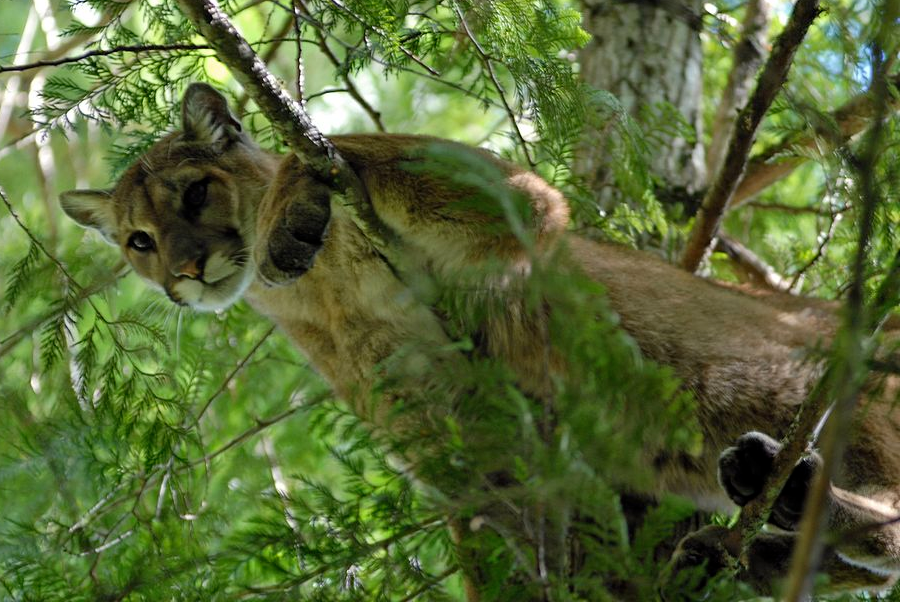
the Eastern Cougar is prefers a habitat with trees
Source: Wikipedia, Cougar
Though the cats prefer forested areas and rely upon cover as they stalk their prey, they are generalists and will use a range of habitats. Scientific reports one claimed that the Florida Panther was an obligate forest species and used lands only within 100 yards of forests. It turned out the claim was based on selective use of daytime telemetry data only, and the panther is most active at night.
Male cougars have demonstrated their willingness to cross gaps in forested corridors as they search for new territory. The New York Times reported that a cougar killed in Connecticut by car in 2011 was from the Black Hills of South Dakota:6
If a cougar population was e-established in the east, it would pose a risk to backcountry hikers similar to that posed by bears. Since 1890, roughly 20 people have been killed by cougars. In comparison, deer are more dangerous. Each year, deer-car collisions kill approximately 200 people.7
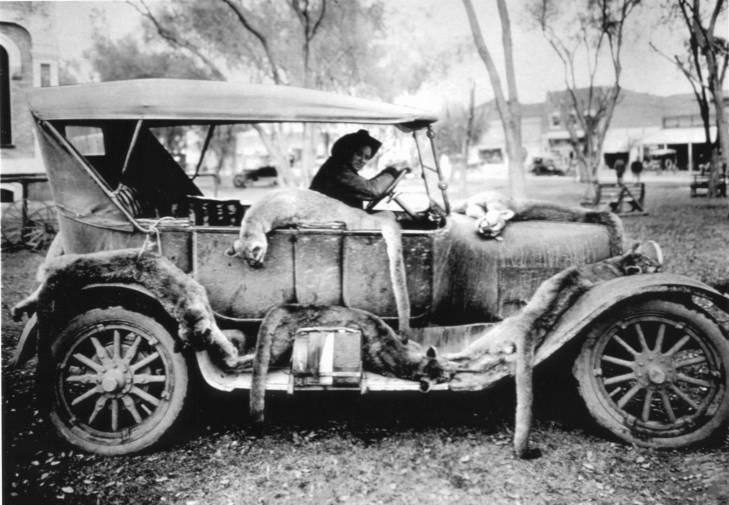
the Eastern Cougar was extirpated by excessive hunting pressure, as well as severe reduction in their prime food source of white-tailed deer
Source: US Fish and Wildlife Service, Market Hunting of Cougars
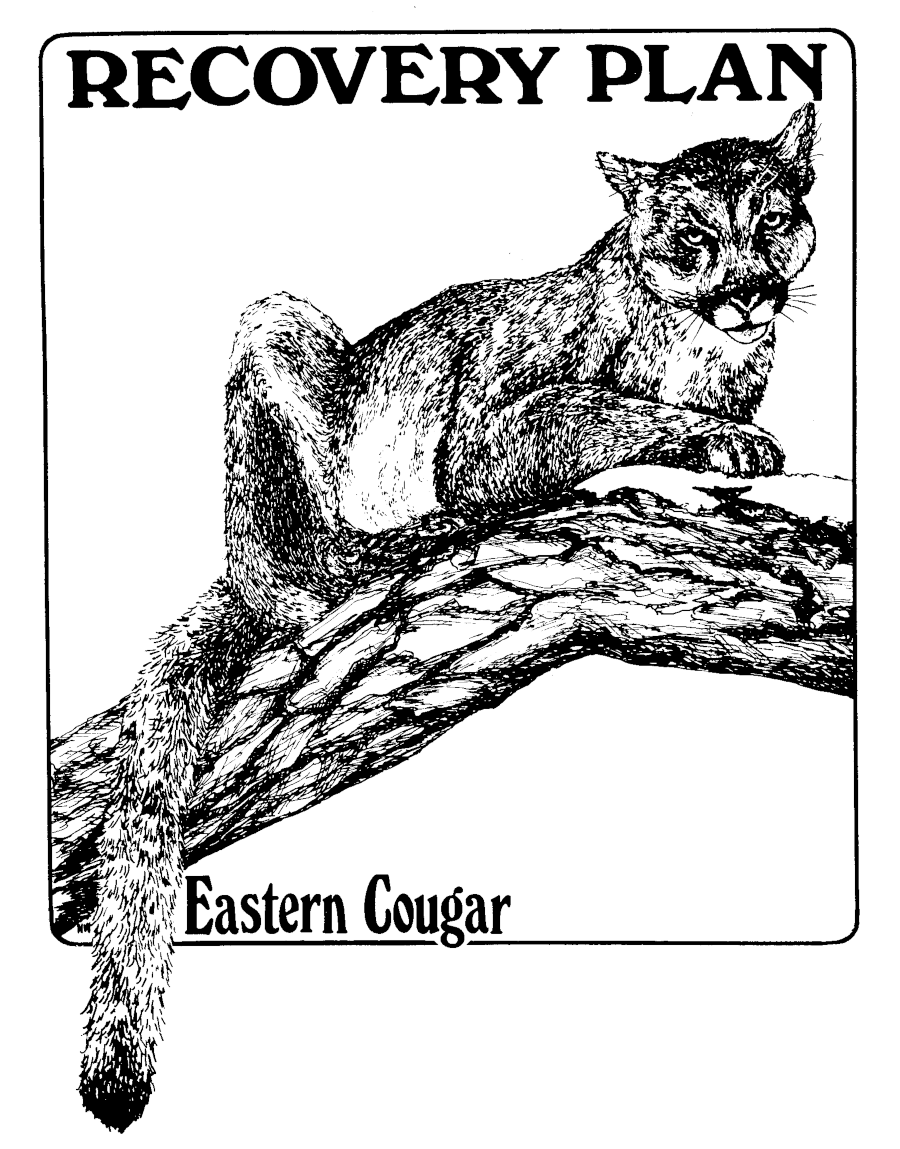
the 1982 Eastern Cougar Recovery Plan determined that three breeding populations would be necessary before the species could be delisted
Source: US Fish and Wildlife Service, Eastern Cougar Recovery Plan
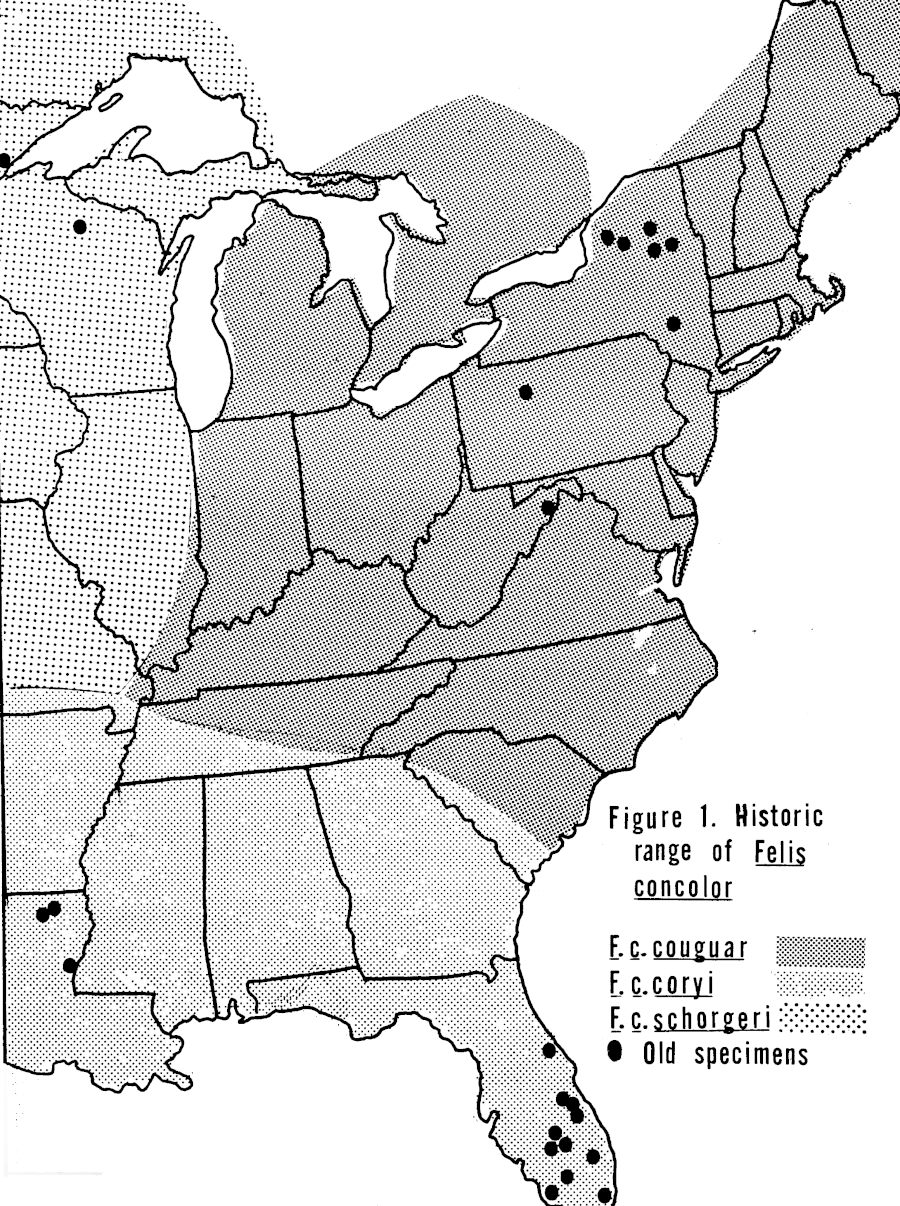
morphological differences identified from museum specimens was used to classify over 30 subspecies of the Eastern Cougar, before DNA analysis was available
Source: US Fish and Wildlife Service, Eastern Cougar Recovery Plan (page 2)